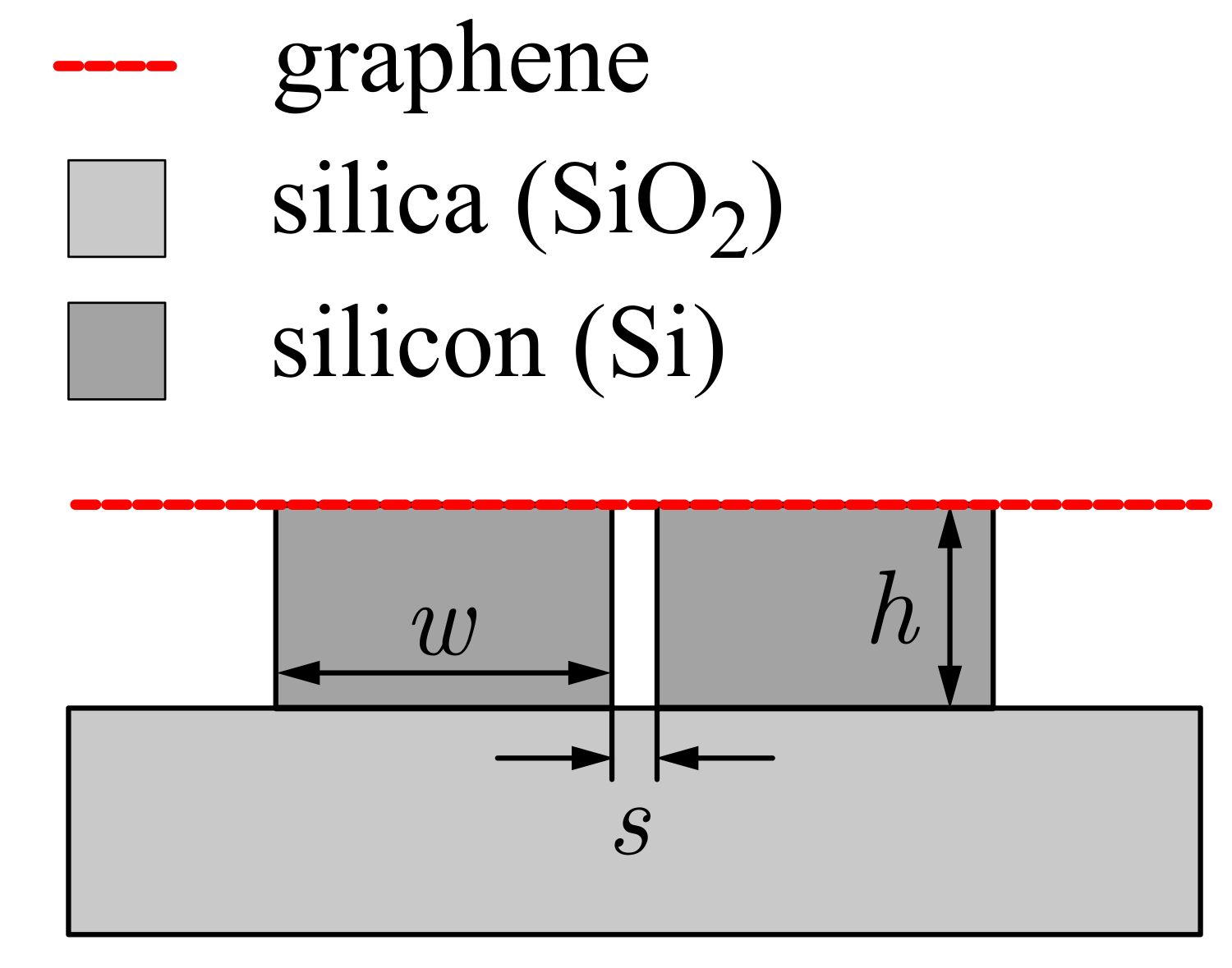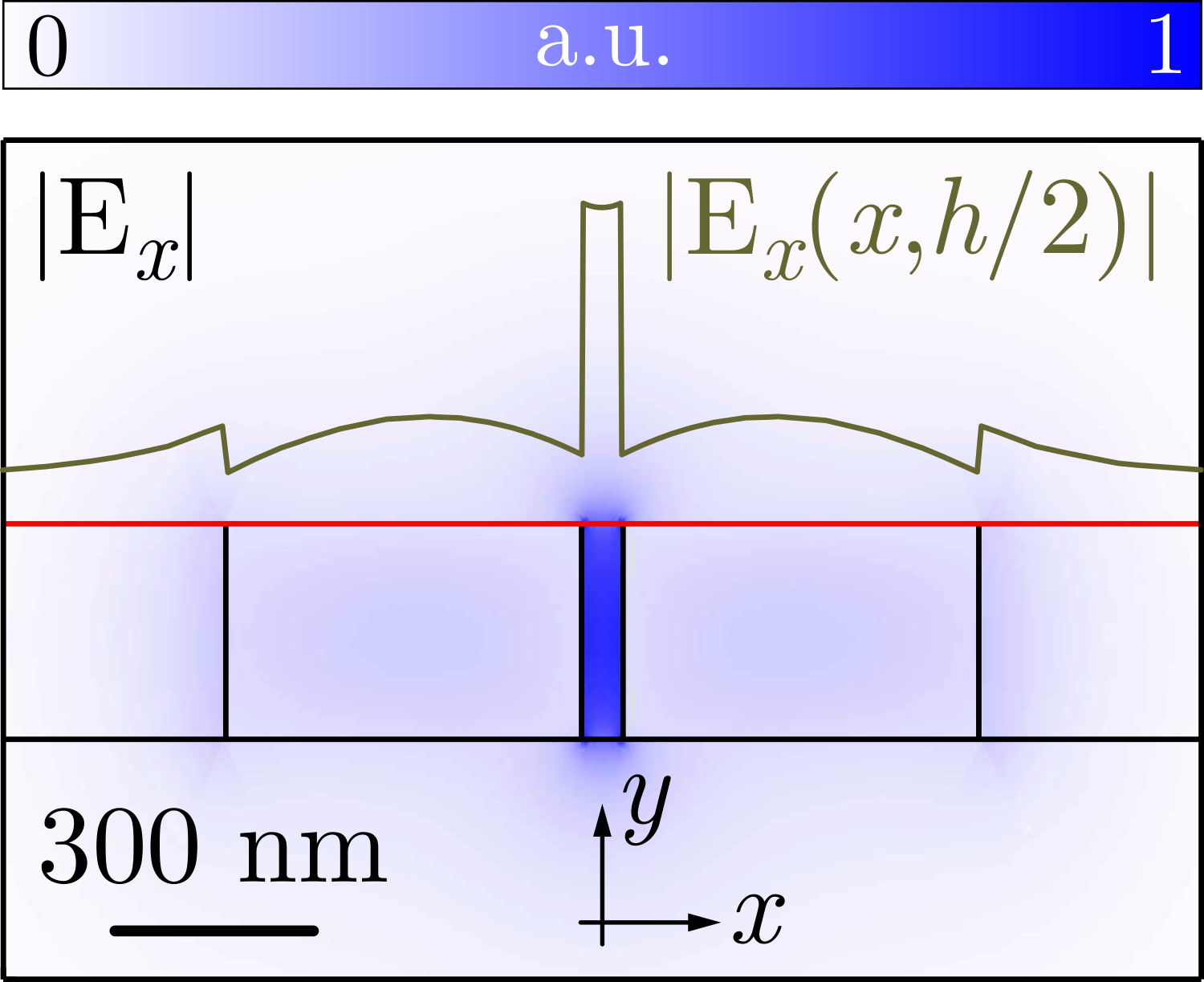
Graphene-enhanced waveguides in Si platform
Silicon waveguides overlaid with a graphene layer can provide an excellent integrated platform that allows for efficient manipulation of the light carried by the guided mode. Earlier demonstrations include a broad range of electro-optic modulators in the NIR that are based on voltage-gating of graphene; the voltage modifies graphene's surface conductivity, and this subsequently translates into different loss levels experienced by the guided mode. The graphene provides the loss mechanism whereas optical guidance is exclusively attributed to the underlying silicon waveguide. Apart of the linear properties, graphene also demonstrates a range of important nonlinear properties that can be exploited in such waveguides, in all-optical control. They include the instantaneous Kerr effect and two-photon absorption (TPA) in graphene, both of which are recently found orders of magnitude larger than their respective counterparts in silicon. At the same time, TPA in silicon produces free carries with finite lifetime which, in turn, have a significant impact on silicon macroscopic properties (refractive index and absorption) and in the literature they are referred to as free-carrier effects (FCE). More importantly, graphene also presents a loss saturation mechanism, broadly known as saturable absorption, that typically develops at low to moderate power levels, usually well below the level of Kerr response.
Fig. 1 shows a conventional slot waveguide in silicon that provides an excellent platform for light-graphene interaction; the guided mode is highly localized in the slot area and overlaps with the graphene layer and furthermore the dominant TE nature of the mode guarantees that the electric field is parallel to the graphene layer. Fig. 2 depicts the mode profile together with a horizontal field cut showing the high mode confinement for the component parallel to graphene, that provides the interaction.
The Nonlinear Schrodinger Equation (NLSE) framework with the appropriate extensions and reformulations is an excellent tool for studying such nanophotonic waveguides and for predicting their nonlinear response in complex cases such as in in multi-mode or multi-channel scenarios and when multiple nonlinear effects, including the pertinent SA, are present and interplaying.
References
[J.3] Christopoulos T., Tsilipakos O., and Kriezis Em. E., "Degenerate four-wave mixing in THz with standing-wave graphene resonators", Journal of the Optical Society of America B, 37 (9), 2626-2636, (2020). [pdf]
[J.4] Chatzidimitriou D. and Kriezis Em. E., "Light propagation in nanophotonic waveguides considering graphene's saturable absorption", Physical Review A, 102 (5), 053512, (2020). [pdf]
[J.7] Sinatkas G., Christopoulos T., Tsilipakos O., and Kriezis Em. E., "Electro-optic modulation in integrated photonics", Journal of Applied Physics, 130 (1), 010901, (2021). [pdf]
[J.10] Pitilakis A. and Kriezis Em. E., "Ultrafast pulse propagation in graphene-comprising nanophotonic waveguides considering nonperturbative electrodynamic nonlinearity," Journal of the Optical Society of America B, 39 (10), 2723-2734, (2022). [pdf]
Fig. 1: Silicon slot waveguide overlaid with a graphene monolayer for introducing nonlinear response.
(Click on image to enlarge)
Fig. 2: Profile for the fundamental mode supported by a silicon slot waveguide overlaid with a graphene layer and line-cut along the graphene layer.
(Click on image to enlarge)



